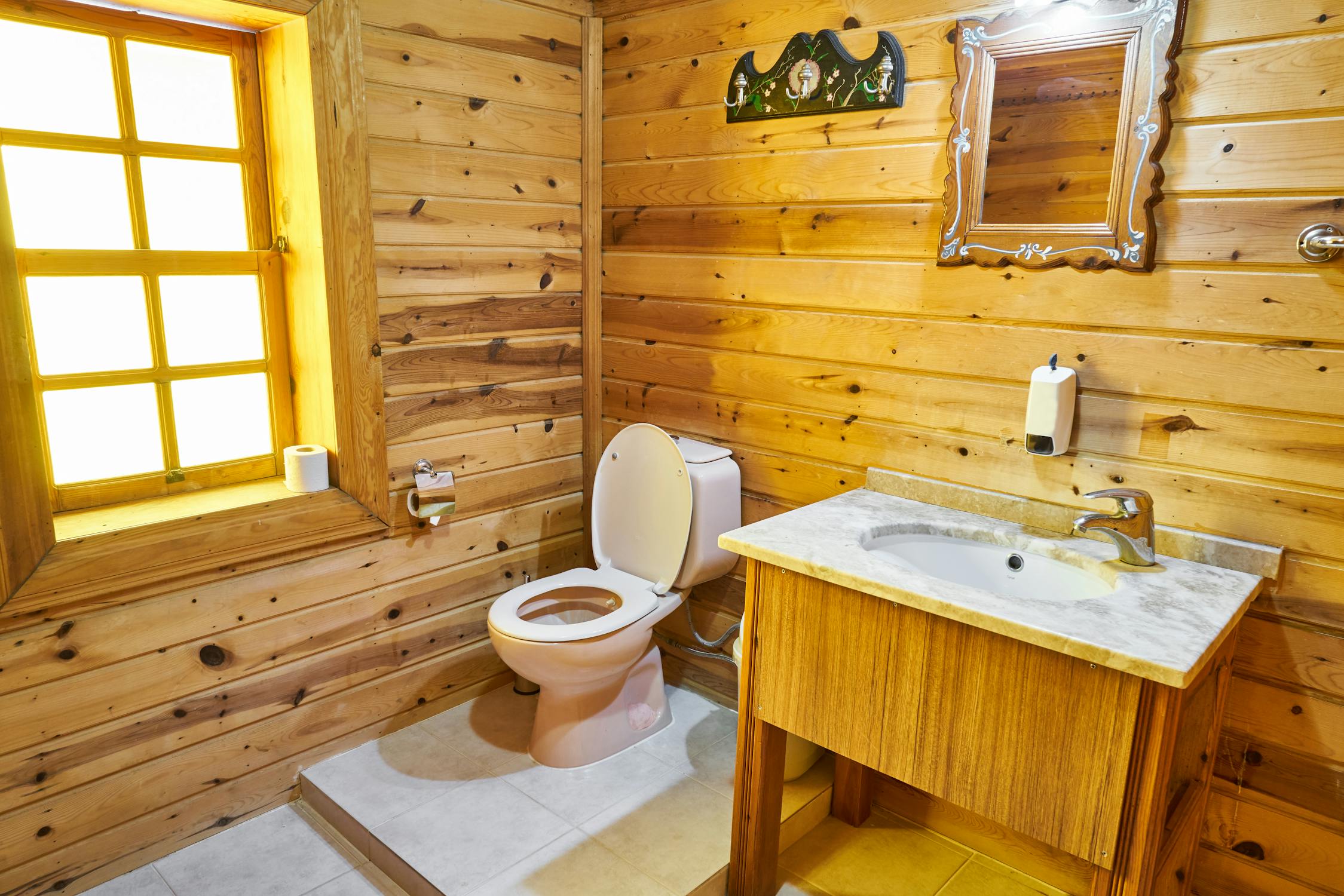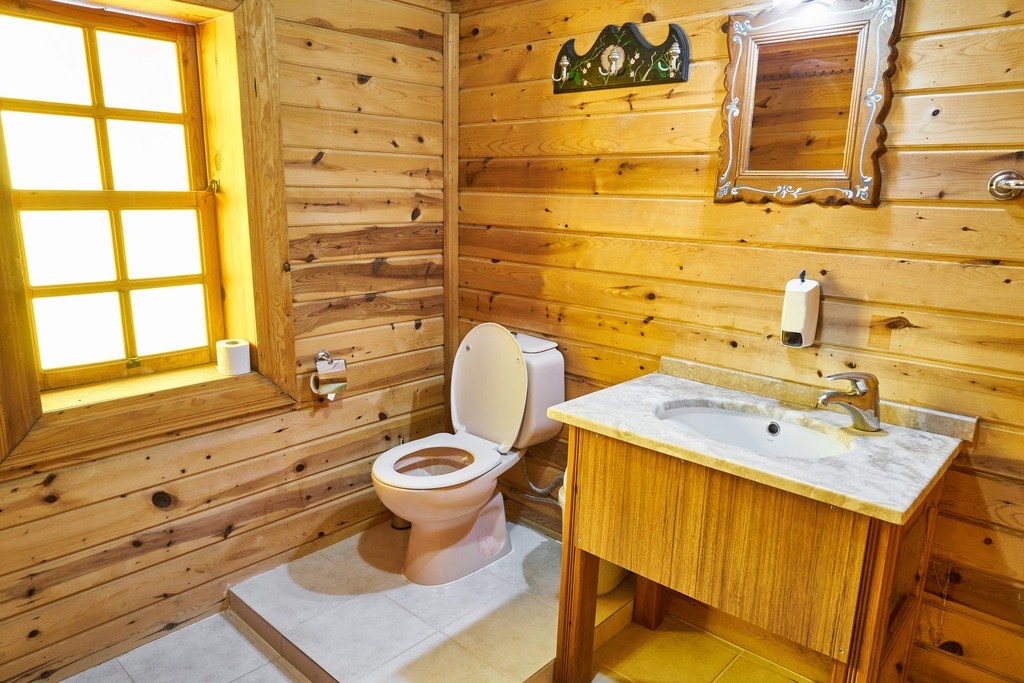Today, most people don’t understand the engineering marvel that the toilet represents, but everyone certainly appreciates the toilet’s effectiveness. Most people believe that Thomas Crapper invented the flush toilet, but the true genius belongs to Sir John Harrington of England. In 1596, Sir Harrington described a flushable toilet in a pamphlet and installed a working model in Richmond Palace for his godmother, Queen Elizabeth I.
Alexander Cumming, an English inventor, received the first patent on a flush toilet in 1775. His invention added the S-shaped pipe beneath the bowl that sealed off the sewer gas from entering the bowl. It wasn’t until the late 1800s that Thomas Crapper gained fame for producing a line of flush toilets. Crapper’s innovation introduced the ballcock, an improvement to the tank-filling process that continues to be used in toilets today.
So, how do toilets work?
The Anatomy of a Toilet

Image by Engin Akrurt free to use by Pexels
Let’s take a look at the parts of a toilet first. The porcelain toilet has two main parts: the upper tank and the lower bowl. The tank rests on the bowl and holds around two gallons of water. You’ll see the flush arm, a flapper chain, and a flapper attached in a series Inside the tank. You can see a separate contraption including the fill valve, float, and a refill tube. The refill tube empties into a third piece called the overflow tube.
The bowl has no moving parts. The porcelain was designed with a bowl, rim jets, a siphon jet, an S-shaped trapway, and a descending exit tube, all in one piece.
How the Flush Works
When you push the lever on the outside of the toilet, the lever lifts the flush arm. The flapper chain attached to the other end of the flush arm lifts the flapper, which rests over the pipe leading to the bowl. When the flapper lifts, the two gallons of water rush into the bowl.
The bowl receives the water from the tank through jets beneath the upper rim and a larger siphon jet at the bottom of the bowl. Gravity and the pressure from two gallons of water forces the water and waste through the S-shaped trapway and over into the descending exit tube. The water rushes over the trapway creating a siphoning effect, and the water and waste from the bowl get pulled down the exit tube. When the water and waste leave the bowl, air enters the trapway, stopping the siphoning effect and ending the flush.
The Refill
Once the flush completes, we take you back to the tank to see how the water refills the tank and bowl. After the two gallons of water have left the tank, the flapper, also known as the ballcock, drops back in place, sealing off the pipe leading to the bowl.
The fill valve activates, and water comes in from outside the tank and through the fill valve and simultaneously fills the tank while the refill tube feeds water into the toilet through the overflow tube, emptying into the bowl. As the water level rises in the tank, the float rises until it reaches the appropriate fill. At this stage, the fill valve deactivates, and the water coming into the tank shuts off, leaving the tank and bowl full of fresh water.
The Overflow Tube
Inside the tank, the overflow tube opens above the waterline, with the tank full of water. Should the fill valve get stuck in the open position, the water will rise to the level of the overflow tube, which will then act as a safety valve, draining the water into the bowl. Without the overflow tube, this situation would result in water flooding your bathroom.
The magic doesn’t stop there because the water in the bowl rises when the water flows into the toilet through the overflow tube. The excess water gets forced by gravity into the S-shaped trapway and down the exit tube, preventing the water from overflowing in the bowl and onto the floor.
What Happens When I Have No Water?
Emergencies occur, from frozen pipes to main water lines bursting. If the water to your home or business gets shut down for any reason, you don’t need the tank to make the toilet flush. The genius of the toilet bowl only requires you have two gallons of water to make the toilet flush. One caveat remains: the two gallons of water must rush into the toilet.
If you can fill the tank with water yourself, you can flush the toilet normally, and everything will work. Even if the tank on your toilet was broken or leaked so bad it couldn’t hold water, you could still flush the toilet. Take your two gallons of water and pour it directly into the bowl. You must pour the water quickly, or the pressure won’t force water over the trapway to activate the siphoning effect that pulls the water and waste from the bowl down the exit tube.
Why Does My Toilet Overflow?
Your toilet bowl overflows onto the floor when the trapway or exit pipe becomes clogged, or worse, when a clog somewhere down the plumbing line forms, forcing the water back up through the toilet. Putting too much toilet paper in the bowl at once gets the lion’s share of the blame for overflows. Children often put foreign objects like toys into the toilet while mom and dad aren’t looking, causing a clog.
The interior plumbing from your toilet to the street can have multiple turns. These turns have joints that seam two pipes together with glue; sometimes the glue clumps and catches the paper and other items that get flushed. Eventually, this catch builds up until the pipe gets blocked and backs up the plumbing.
If you live in one place long enough, all of these scenarios will play out at some point. Don’t worry. You aren’t alone. At Dahme Mechanical Industries, we’ve served the Arlington Heights and Surrounding Chicago suburbs for years. Our family-owned company can respond to your plumbing emergency quickly and have your toilet and plumbing flushing like normal in no time. You can call us at (847) 396-9821 or contact us online for a service appointment.

